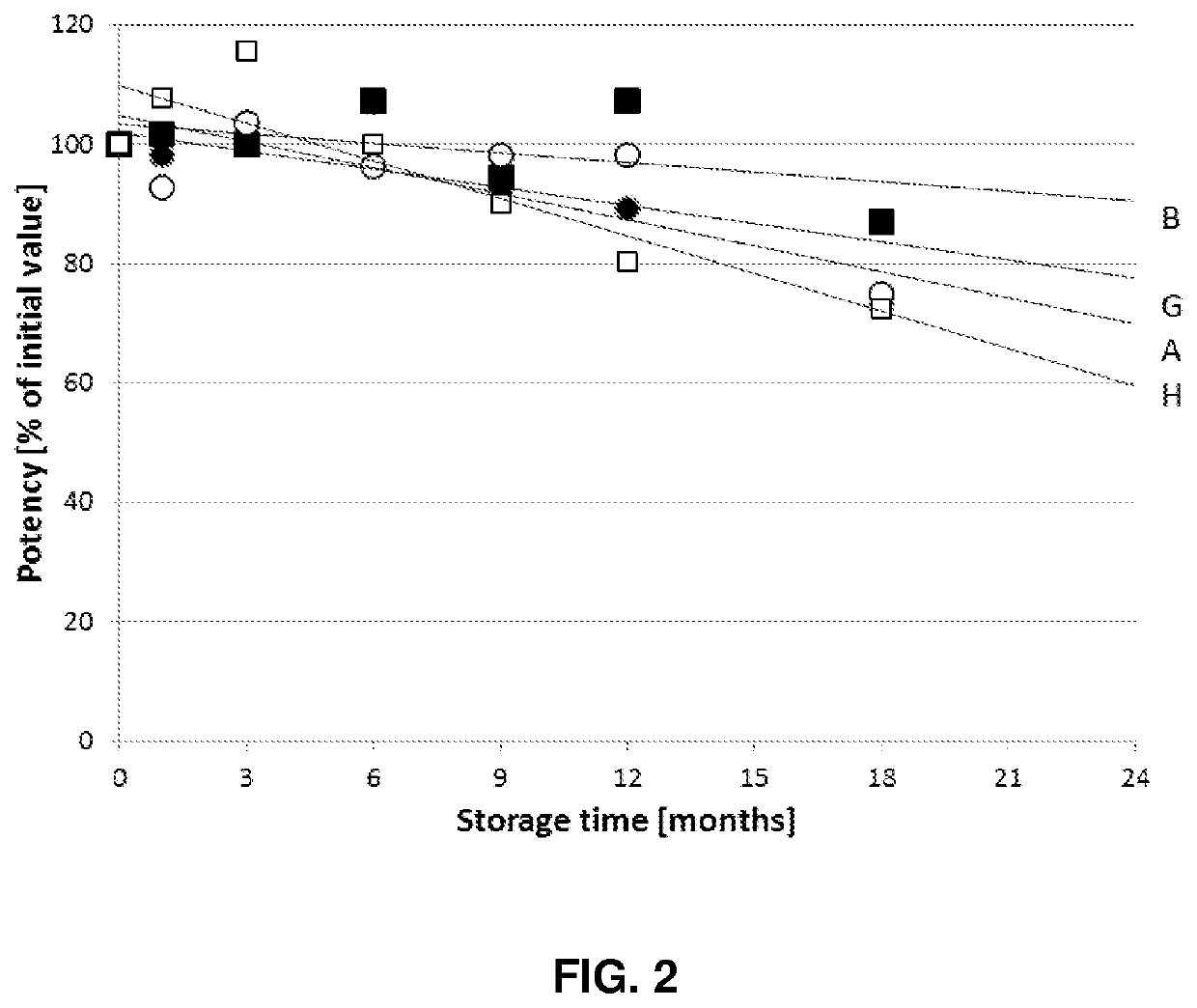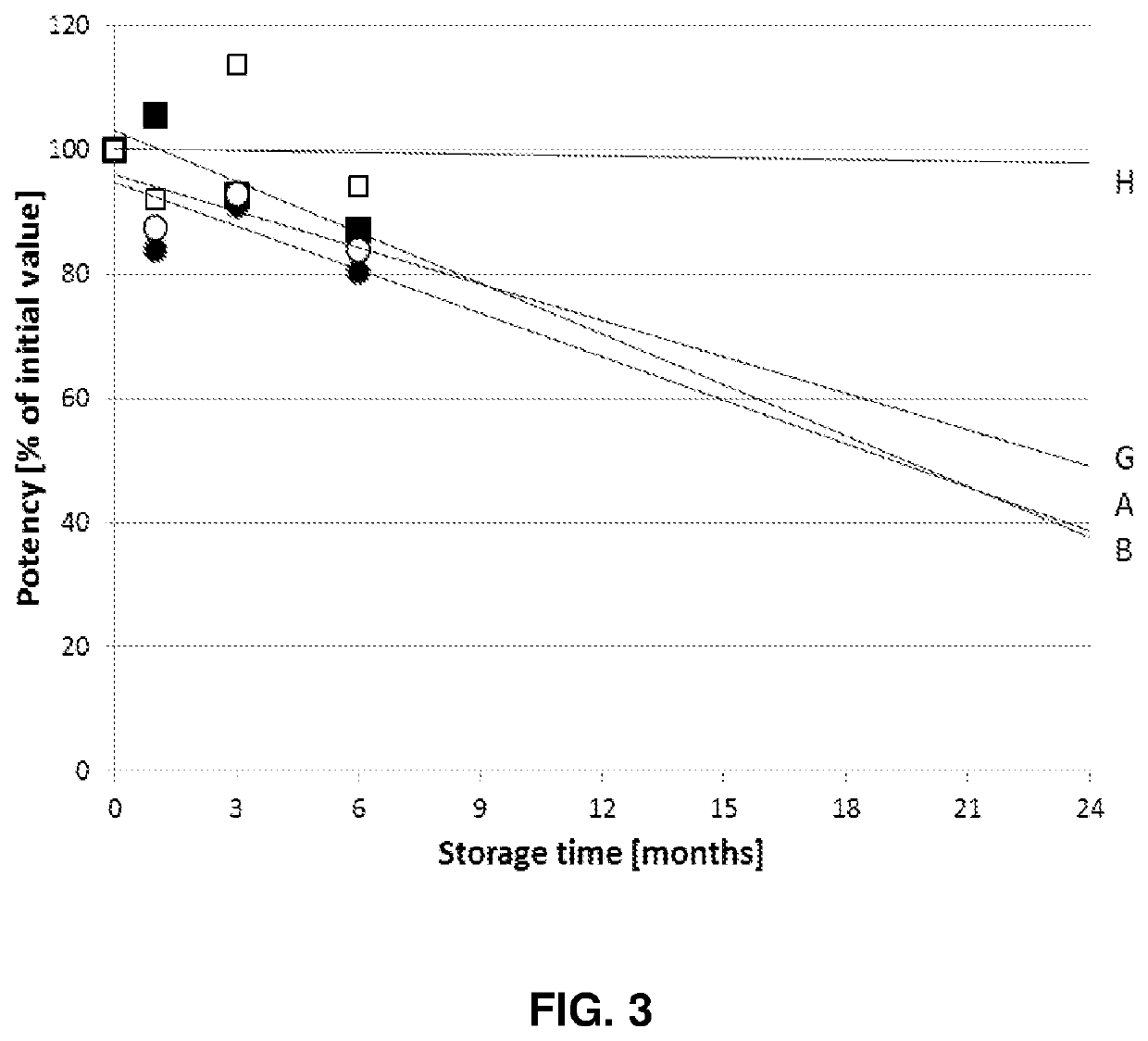Botulinum toxin prefilled glass syringe
a technology of botulinum toxin and glass syringe, which is applied in the direction of drug compositions, dermatological disorders, peptide/protein ingredients, etc., can solve the problems of loss of biological activity during production, deterioration of the performance (safety, reliability, efficacy) of most pharmaceutical products, and bond formation or cleavage, etc., to achieve convenient, safe and easy use, and long shelf life
- Summary
- Abstract
- Description
- Claims
- Application Information
AI Technical Summary
Benefits of technology
Problems solved by technology
Method used
Image
Examples
examples
[0111]The following examples demonstrate the superior long-term stability of an aqueous botulinum toxin formulation in different prefilled syringe systems (in the following referred to as “configurations”) according to the present invention.
[0112]The results obtained for the different syringe configurations surprisingly show that, contrary to expectation and common belief in the art, an aqueous botulinum toxin formulation stored in a prefilled syringe system is stable for a prolonged time period (e.g., up to 18 months) at standard refrigerator temperature (2-8° C.) and is even stable when stored for about 9 months at an elevated temperature of 25° C. Furthermore, extrapolation of the measured stability data indicates that the prefilled botulinum toxin syringe allows the provision of a shelf life at 2-8° C. of about 24 months and even longer.
[0113]Overall, the results obtained show that botulinum toxin can be conveniently used via prefilled syringes. This is an important contribution...
PUM
| Property | Measurement | Unit |
|---|---|---|
| molecular weight | aaaaa | aaaaa |
| temperature | aaaaa | aaaaa |
| temperatures | aaaaa | aaaaa |
Abstract
Description
Claims
Application Information
 Login to View More
Login to View More - R&D
- Intellectual Property
- Life Sciences
- Materials
- Tech Scout
- Unparalleled Data Quality
- Higher Quality Content
- 60% Fewer Hallucinations
Browse by: Latest US Patents, China's latest patents, Technical Efficacy Thesaurus, Application Domain, Technology Topic, Popular Technical Reports.
© 2025 PatSnap. All rights reserved.Legal|Privacy policy|Modern Slavery Act Transparency Statement|Sitemap|About US| Contact US: help@patsnap.com



